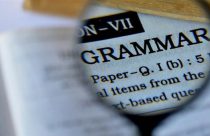How to Get Your Point Across Using Repetition and Variation

As a scientist, you are writing because you have a non-subjective message to convey. That message should be crystal clear. State it, rather than imply it; repeat it to drive it home, and vary it to keep the reader engaged.
In the following example, you can emphasize your message through the Title, Abstract, and Discussion. If you look for it, you will see that a majority of published research papers state and repeat their message in these sections, as follows:
- Title: Effects of number of cagemates on home cage ethanol drinking during proximal cagemate drinking (PCD) procedures in male and female CD-1 mice
- Abstract: The present experiment evaluated the effects of the Number of Cagemates (0 vs 1 vs 2) on home cage ethanol drinking during Proximal Cagemate Drinking (PCD) procedures in Male and Female CD-1 mice…
- Discussion: The present study employed Proximal Cagemate Drinking (PCD) procedures to evaluate the intakes of ethanol and water in nonaddicted Male and Female CD-1 mice during their first 12 days of exposure to ethanol drinking.
If your message doesn’t emphasize your point like in the above examples, revise it until it does. You can refine the message so that it varies in other crucial locations, as this paper does in the Introduction, after a survey of the literature:
- Introduction: The present study evaluated the effects of social stimulation on ethanol consumption in the home cage using the Proximal Cagemate Drinking (PCD) procedures. (Tomie et al.)
Variation
Variation can also be used when a paragraph has more than one topic sentence. When there is a lot going on, repeating the topic sentence with refinement will help your reader to stay on track:
Our working conceptual model is designed to illustrate only the possible mechanisms of S–W disturbances in alcohol addiction, focusing only on the role of the PPT in the development of sleep disorders that result from chronic exposure to ethanol (Fig. 2). Given the known anatomical connections between the PPT and the VTA, it seems reasonable that changes in PPT activity might influence drug relapse via this structure. This is clearly suggested by the finding that lesioning of the PPT blocks the expression of ethanol-induced reward, as measured by place preference, only independent withdrawn mice [207]. In addition to its role in mediating the rewarding effects of ethanol, the VTA is also implicated in mediating the prediction of the availability of rewards (via phasic firing of dopaminergic neurons) [208,209] and signals for aversive stimuli [210]. Collectively, this evidence suggests that the PPT may act via the VTA to influence alcohol consumption and seeking behaviors. Thus, the neuroadaptation at the level of CCC-PPT may be a critical patho-physiological mechanism for the S–W disturbances in AUD.
In the example just cited, the first sentence was the main topic sentence and the last sentence was a refinement of that sentence.
Repetition
Repetition can also be used microcontextually, to drive home a crucial point, as does the word “alcohol” here:
The development of AUD is characterized by frequent episodes of intoxication, preoccupation with alcohol, use of alcohol despite adverse consequences, compulsion to seek and consume alcohol, loss of control in limiting alcohol intake, and emergence of a negative emotional state in the absence of the drug. (Knapp, Ciraulo, and Datta)
Here the substitution of “the drug” in the final position is a variance that only serves to strengthen the focus on “alcohol.”
After reading your paper, a reader should never have to struggle to articulate your message, because you will have clearly and repeatedly expressed it.








